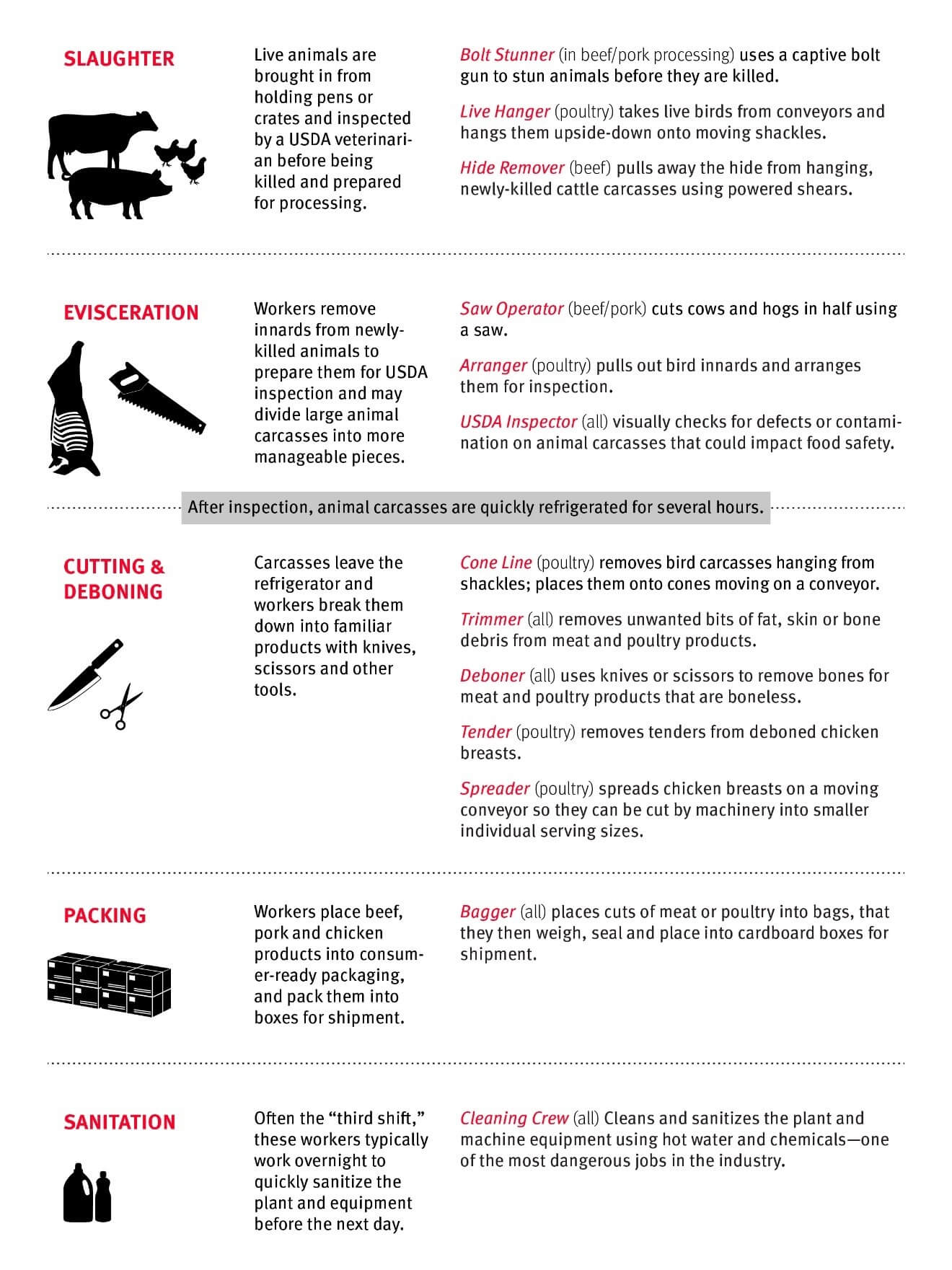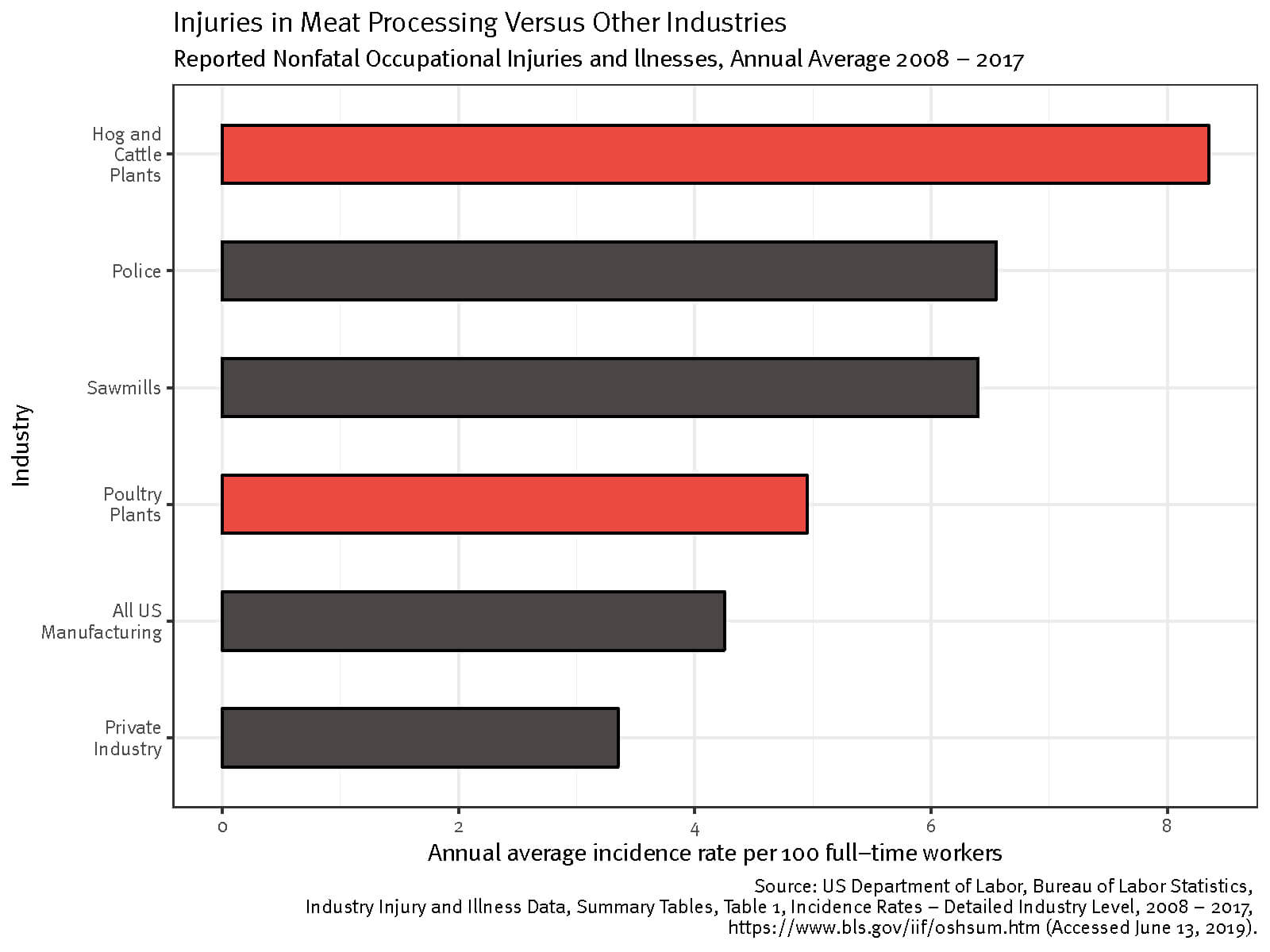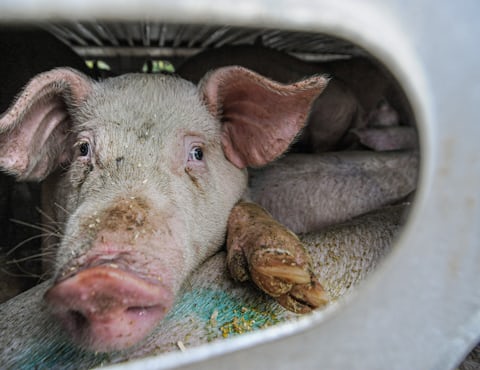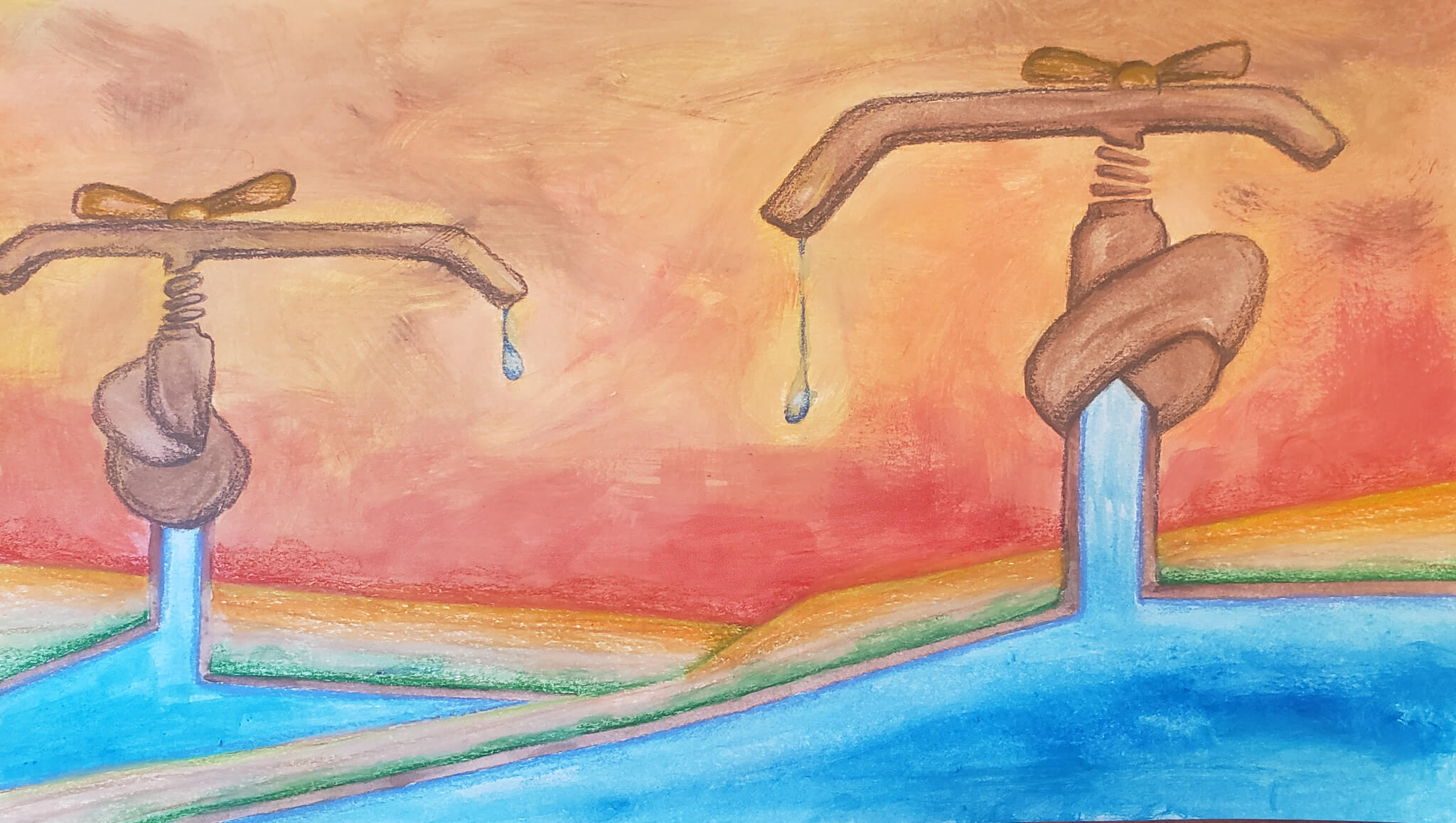Torment and butchery or torment in butchery
Vegan Society of Canada News
December 2nd 2019
The follow up report by Human Rights Watch on the cruelty, torture and exploitation of human animals in slaugtherhouses is out, and unfortunately nothing since their 2005 initial report or the Oxfam 2015 report we covered here has changed. In fact, conditions seem to be much worse.
The root cause of what is taking place in slaughterhouses is the never-ending quest for profit over anything else. In addition to the not unfamiliar concept of profits over people, the report indicates that we are not only unphased by the plight of non-human animals, we have little compassion for human animals as well.
Most regulations with regards to meat processing are only concerned about the safety of the food and not the suffering that takes place in the process of becoming food. Animal agriculture corporations continuously work to increase production speed and reduce labour costs, which inevitably leads to problems for those working in this industry.
Most workers reported serious injury or illness due to their work, and many admitted that their lives are now consumed by the management of their chronic pain or sickness. This is only one reason why what is considered to be “humanely” raised meat from living animals is still unethical, even when we only consider the well-being of workers, which is not included in any standard or certification programs for “humane” meat.
Turning live animals into what you see on grocery store shelves is dangerous business. Below is an image that explains the process and the workers needed to complete that process:
In fact, as the graph below indicates, hog and cattle plants have the highest occupational injuries and illnesses on record, surpassing injuries police sustain in the line of duty:
Additionally, the report states:
[...] that a worker in the meat and poultry industry lost a body part or was sent to the hospital for in-patient treatment about every other day between 2015 and 2018.
These are only the cases that get reported. Worker intimidation, abuse, and various loopholes in incident reporting make these statistics a low estimate of the true numbers. There is no evidence to suggest this is any different in Canada.
It may actually be worse since in the U.S. the statistics on worker injury is compiled by the government through the U.S. Bureau of Labor Statistics, which provides broad statistics publicly available, similar to what one would expect from Statistics Canada; however, in Canada this data is available through the Association of Workers' Compensation Boards of Canada, which does not have all this information publicly available. When we contacted them to get various data, this level of granularity was not publicly unavailable. We are still trying to workout whether it is even possible to extrapolate this data for Canada.
Workers are frequently discouraged from seeking help from official channels so that the corporation’s accident rate is not affected. Furthermore, various surveys showed that between 40 and 57 per cent of workers do not report work injuries, and those that do often end up being sent back to work with merely the minimum level of care via first aid since this level does not need to be reported. Workers who suffered an injury were often told:
If you [report] the pain, I’m going to be on top of you, I’m going to make your life impossible.
Overall, workers simply fear reprisal and endure the abuse and cruelty that could easily be considered torture in some instances. Just like the workers interviewed in our previous coverage, the workers for this report also commented on being verbally abused and prevented from using the washroom, having to urinate on themselves or wear diapers:
A few workers who spoke with Human Rights Watch described coworkers wearing diapers at their workstations or urinating on themselves. Spencer Lo, who helps organize poultry workers with the Western North Carolina Workers’ Center, said, “[w]hen the women get pregnant, they have to use diapers.... Lots of workers cry when they speak to me.
Some research shows that this practice can have serious consequences on health, such as increasing the risk of urinary tract infections. Furthermore, when workers are given a break to use the washroom, time allowed isn’t sufficient to accomplish even that:
We have to go downstairs, get out of our gear, and there aren’t enough bathrooms for all of us. Just taking off your equipment and putting it back on takes up almost all of your time.
As corporations chase higher profits, workers feel the only thing slaughterhouses are concerned about is this:
What they want to know is, can you still work without bleeding in the meat?
As a result workers face debilitating injuries that prevent them from accomplishing simple everyday tasks; one worker stated:
I would come home and go to sleep. When I woke up, I couldn’t really use my hands. Couldn't brush my hair or put on my clothes. My hands were just locked up. It would take a couple hours to open and loosen up and start to get feeling back. It felt like they were essentially paralyzed.
Workers are not only facing serious injuries from machinery and repetitive movement, they also face injuries due to exposure to dangerous chemicals that are used as antimicrobial agents to reduce contamination of the meat by salmonella, campylobacter and feces. As factory farming ramps up to increase profits and more animals are crammed into smaller spaces, contamination becomes the norm, which then must be matched by an increased use of chemicals to keep the meat from potentially killing non-human and human animals alike.
One of those antimicrobial agents is peracetic acid (PAA). PAA is highly corrosive and can cause injuries on contact; once again the main concern by animal agriculture corporations is the safety of the food and not the safety of workers or animals. Despite the dangerous nature of PAA, there is no legally binding airborne exposure limit in the U.S. or Canada. Some workers in the report complained of the horrendous effects from the chemicals:
As soon as we would enter we would start to tear up.... It was really strong. We felt like we were getting sick—your throat, nose. For me, I would cry. I was always crying. I also had really strong pain in my throat. Some people would get bloody noses.... Almost every day it was one person or another [complaining to management]. One pregnant woman went to ask what chemicals they were using and what [they would] do to [her] child [but the company] said that it was within the permitted standards.... Their solution is to say: ‘If you don’t want to stay here, go.
Unfortunately as we have previously reported, as Canadians we are unwilling to do the killing ourselves, but deem it acceptable for immigrants to be subjected to this cruelty and torture. The report also uncovered evidence that animal agriculture corporations have contracted with refugee resettlement agencies, and, where legal, even state prisons so they can more easily exploit their workforce.
The biggest difference between Human Rights Watch and the Vegan Society of Canada is in our solution to this problem. The report goes on for many pages on various solutions relying on the government and animal agriculture corporations to implement various changes. The problem is, by their own admission, it has been many years since these problems were exposed with little change. Even their initial report in 2005 had many similar solutions, but 14 years later things are just getting worse.
Our solution is much simpler, with a 100% success rate and does not depend on government or animal agriculture corporations to cultivate compassion: Go vegan. Let’s give those workers a job in a vegan certified protein manufacturing plant. As we previously said, we are against the exploitation of all animals, and our vegan certification standard does not and will never tolerate going backward on human animal rights as we move forward to achieve our vision of ending exploitation for all animals.
A change of lifestyle offers individuals a powerful means to combat a range of issues, including personal health problems, climate change, loss of biodiversity, global acidification, eutrophication, freshwater shortages, pandemic prevention, antibiotic resistance, save countless lives and much more. We know of no other efficient way for individuals to address these critical challenges simultaneously without waiting for government, corporate, or technological interventions. By changing lifestyle, people can take immediate and impactful action. We encourage you to embrace this lifestyle change today. Contact us for support and to connect with local communities in your area.






